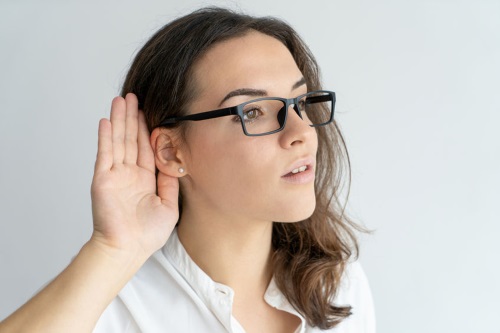If you’ve been in this business for more than a week, you know how important training your ears can be. Our hearing is very sensitive, and in addition to protecting it, we need to keep it in shape. Here are some tips that I’ve found helpful over the years.
Perception Goal
Sound mixers of all types should possess the ability to focus their hearing on individual sounds within a larger mix, a sort of “zoom-in, form an analysis, zoom back out, and analyze again” process. Rinse and repeat as needed.
Another way to think about it is selecting “solo” on the console without all of the show-stopping awkwardness of actually soloing the channel in the middle of an event. It takes some practice but once you get it down, exercise it frequently.
The goal is to be able to focus in on something to make slight adjustments and then re-incorporate these elements into the mix to finish making any necessary adjustments. This assures that you’re able to find issues deep in the mix while still mixing the entire image.
Another metaphor for it is looking at a painting through a magnifying glass – the smaller details matter because the whole of them makes up the piece, but don’t forget the larger picture. The ability to focus your hearing will also let you discern whether or not every instrument is audible. One of my top three mixing must-have’s is being able to hear every single instrument.
Perception Training
Listen to some of your favorite songs and try to find the quietest instrumental part. Focus on recognizing what rhythm that instrument is performing. When you start to get comfortable, try zooming your perception in and out of that instrument as quickly as possible.
For example, I might focus on a synth part, realize that it’s sitting nicely in the mix, and then immediately divert my attention to the guitarist playing a rhythm part. Every instrument has a place in the mix; be sure to place it there.
EQ Goal
Knowing frequency ranges, and where common instruments fall, is a necessity. You should always know where to start when something needs to be equalized.
It’s also a priority to be able to identify – within an octave or two – where an issue is occurring and do some quick arithmetic to determine its harmonics. This significantly narrows the possible frequency range of where the problem might be occurring, which will let you avoid wildly sweeping filters around. This can expedite the sound check process as well as the process that engineers go through in the heat of a mid-show error.
EQ Training
There are several ways to do this, but here’s the method I recommend. Select a song that you won’t mind hearing 300 more times on an endless loop. Import it into recording software or play it through the console. Apply a parametric EQ and set a 10 to 15 dB boost starting at 20 Hz, with a moderate filter bandwidth. Bypass the EQ and listen to the song as it normally is, then turn the EQ back on. Listen carefully. Toggle the filter in and out to see if you can hear the difference.
Then double the filter’s frequency to go up an octave and do the same thing. Begin to understand what each area of the spectrum sounds like. Try to find identifying characteristics about each octave (I think “dinosaur steps” for 20 Hz). An understanding of how the console’s EQ filters affect the different frequency ranges is also important, and for that I recommend checking out Michael Lawrence’s article here examining console EQ responses with an analyzer.
Be sure to take frequent breaks to keep your ears fresh – when they get fatigued, they try to maintain homeostasis, which is a constant state of returning to a stable equilibrium. Our bodies are very good at adapting. For example, regardless of the environment, they work to maintain a normal body temperature.
Another example: If we’re around a scent for very long, it “disappears” because we get used to it. Basically, our sensitivity to “abnormal” states can decrease over time. There are ongoing experiments examining how our auditory systems may use mechanisms of a homeostatic variety to compensate for changes in environment. This could mean that the hair cells in our inner ears can change their sensitivity (and other parameters) based on a certain range of stimulus.
Homeostasis aside, hair cells experience fatigue if we don’t give them a break. Make it a habit to stop listening but leave the headphones on with nothing playing through them for a few minutes. This will reset your hearing and then you can get back to training! If you start to get really good at hearing a 10 dB boost, make it 5 dB.
More challenging? Switch to attenuation. The removal of spectral energy is incredibly difficult to hear without a direct comparison. This should keep you busy for a good while. If you’d like to keep score, I recommend a program called Golden Ears, which can blindly quiz you to really stretch you to the limits.
Another great option is SoundGym, a free website that gives some great training on not only EQ, but sound quality, dynamics, and even sound location. It’s going to be tiring and it’s going to take some time, but doesn’t all training?
Feedback Goal
Feedback is every mix engineer’s worst enemy and a mistake that everyone in the building can hear. While I advocate having solid gain structure to prevent it from happening, it still occurs at times. Fortunately, you can train your ears to almost “feel” when signal is about to spill over back into the microphone. The next best option (immediately following identifying that the feedback is happening) is recognizing the pitch at which it is occurring.
Feedback Training
This can go hand in hand with frequency training. Knowing relative frequencies can be a lifesaver. High-pitched feedback is almost always audible as soon as it happens, or when it trails off of a voice that’s right on the cusp of feeding back. But what is “high frequency”? We’ve got about 18,000 cycles per second to choose from. Start by going to a frequency training website or software (I’m a real fan of Quiztones) that lets you quiz yourself on tones as well as EQ and gain changes. It’s a great app, well worth the $5 investment.
When I’m training I put on my favorite pair of headphones, close my eyes, and focus. The more practice I get in, the less isolated I make the training environment. Sometimes I even plug my phone into the house system to test my responses in the room I mix in frequently.
Typically, when feedback is bad, it’s a gain thing. When feedback is subtle, it’s an EQ thing. To notch these frequencies out without losing your entire gain structure, you’ve got to be able to quickly identify where the problem is occurring (without the use of a real-time analyzer, if possible). Don’t be the person that lets the room ring for five minutes because you’ve got no idea where to cut.
Final Thoughts
That rock band does not need to be 120 dB. Loudness does not equal quality; in fact, the opposite is true. Get molds for custom ear plugs and protect your most valuable asset. Consider it insurance.
In addition to protecting your ears from abuse and fatigue, I also recommend not overthinking. A mind that’s clouded or distracted won’t be able to focus and train. There are times to focus on one task, and one task only.
Whether you’re new to the field or have 15 years behind the board, it’s vital to keep your ears as fresh and as sharp as possible. Come up with some different training methods to push yourself and keep things from getting boring. Training breeds greatness. Go, train.




















